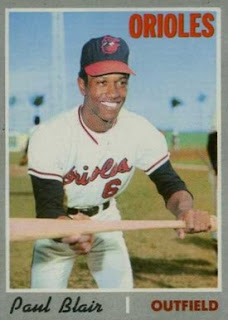Game 1, 1969 ALCS: Minnesota Twins at Baltimore Orioles
October 4, 1969, Memorial Stadium, Baltimore, Maryland
After operating with the same 16 teams for 60 years, the American and National Leagues each added two teams in 1961/1962, and then again in 1969. That second expansion in 1969 brought both leagues to 12 teams and inspired another major change: the introduction of divisions.
Though divisions were new in 1969, they didn't really add any drama to the pennant races. The Orioles, winners of 109 games, would have won the league by 12 games had the league not been split up. As it was, they won the brand new East Division by 19 games. Their reward for winning the division so comfortably was a showdown with the Twins, who won the West by 9 games.
With seven future hall of famers on the field (including two who got elected this year, Jim Kaat and Tony Oliva of the Twins), there was the hope that despite the Orioles' gaudy record, the Twins could put up a good fight in the series. Luckily, the first ever ALCS game lived up to the hype and beyond, easily justifying its new existence.
The Orioles used two solo home runs off Twins ace Jim Perry to take 2-1 into the top of the seventh. After Mike Cuellar struck out Rod Carew, Harmon Killebrew drew a walk. Cuellar then hung a curveball that Oliva happily hit over the fence to give the Twins a 3-2 lead.
The score stayed that way until the bottom of the ninth when Boog Powell hit a leadoff home run off Perry. After another hit, the Twins brought in star reliever Ron Perranoski to try to shut down the rally. (Why didn't they bring him in to start the inning, you ask? That's a wonderful question, and I'm glad you asked it).
Another batter reached base on an error, and the Orioles ended up with runners on first and third with two outs. That's when Orioles manager Earl Weaver got cute, trying to surprise Perranoski with a double steal. Perranoski wasn't fooled and threw to home in time to easily catch Brooks Robinson trying to steal home.
Extra innings were quiet until the top of the 12th, when the Twins loaded bases with 1 out in 12th. Weaver brought in reliever Dick Hall, who got two straight outs to end the threat. (Apparently Weaver actually knew how to use relievers).
 |
| Paul Blair's 1970 baseball card, in which he demonstrated exactly how he beat the Twins in Game 1. |
With one strike, Blair took a big swing and missed, putting the Twins one strike from surviving the rally. Then Blair pulled off one of the gutsiest plays imaginable, dropping a beautiful two-strike, two-out bunt about 20 feet beyond the plate towards third base, placed perfectly between Perranoski and catcher John Roseboro so neither could pick it up in time to either throw out Blair or tag out Belanger coming from third.
Even Twins manager Billy Martin was impressed by Blair's play. Martin - who was so competitive he was fired from the Twins after the season for punching one of his own pitchers - told reporters after the game that "There's no way to beat a perfect bunt," a statement that if made today would cause most people working in baseball front offices to scream in horror.
Anyway, after winning Game 1 4-3, the Orioles won Game 2 1-0, also in extra innings, before annihilating the Twins in Game 3 to head to the World Series. They lost that series to the Miracle Mets, but they had firmly established themselves as the class of the American League.
| Game 1, 1969 ALCS Overall Rank: 26 Top 10 Swing: 231 Top Play: Boog Powell's tying home run (WPA of 44% for Baltimore) Loser's largest WE: 89 T9, Twins up 3-2, no outs, runner on second, Rod Carew batting. Average LI: 1.69 Highest Leverage Moment: 6.83 (T12, 2 outs, bases loaded, tied 3-3, John Roseboro batting) |
No comments:
Post a Comment